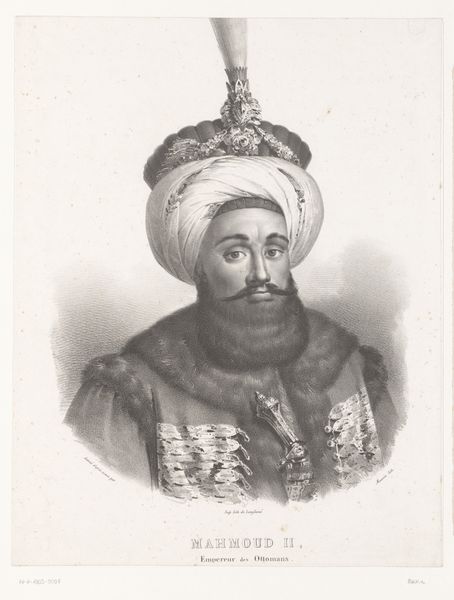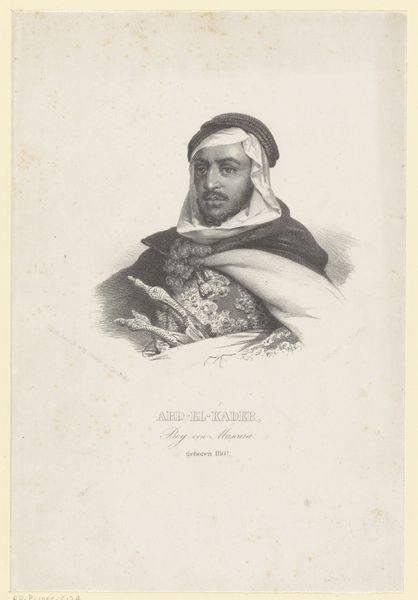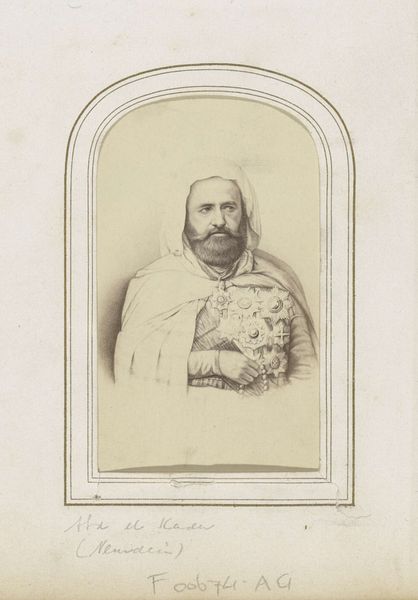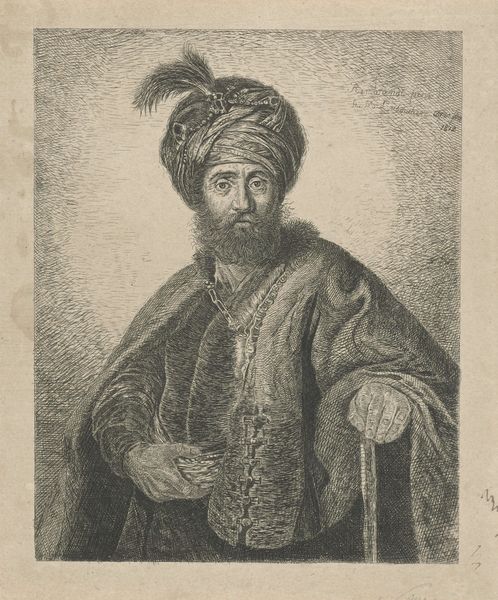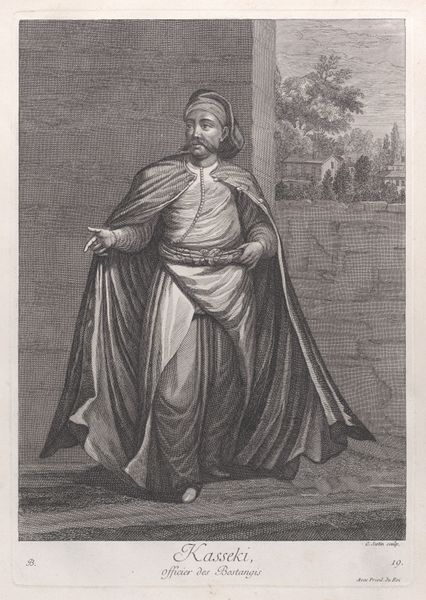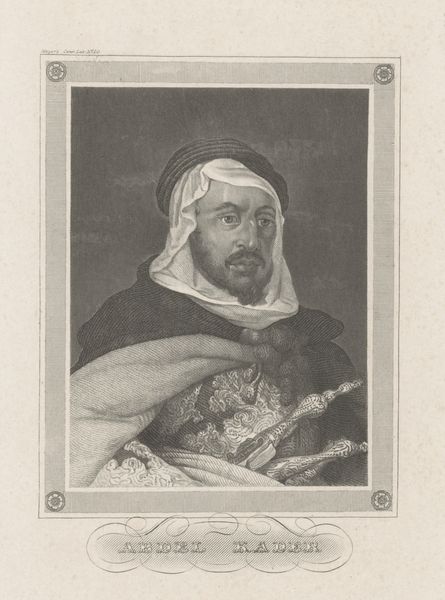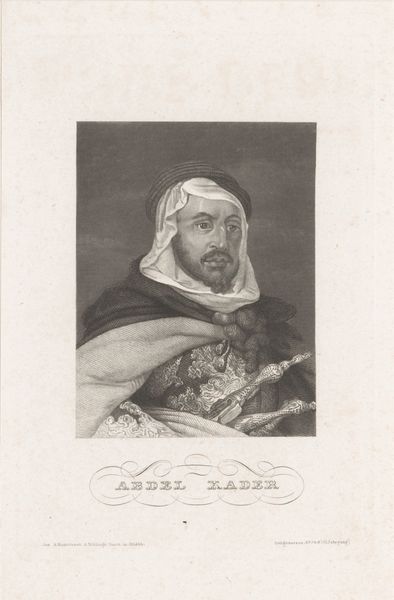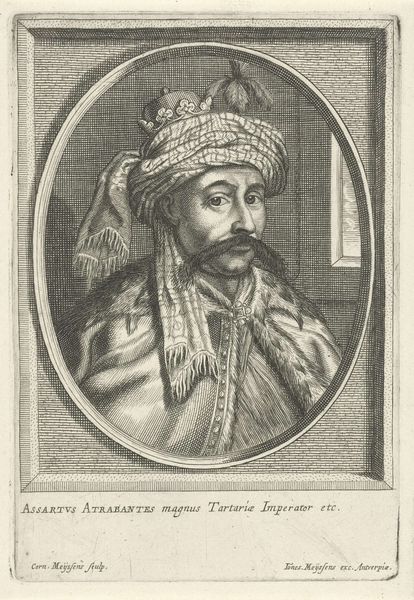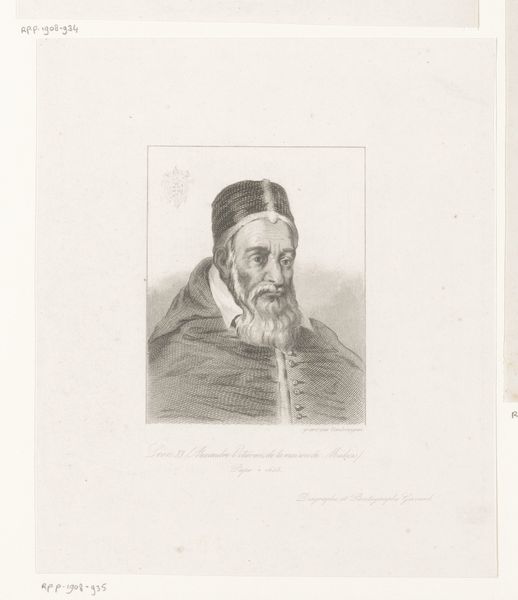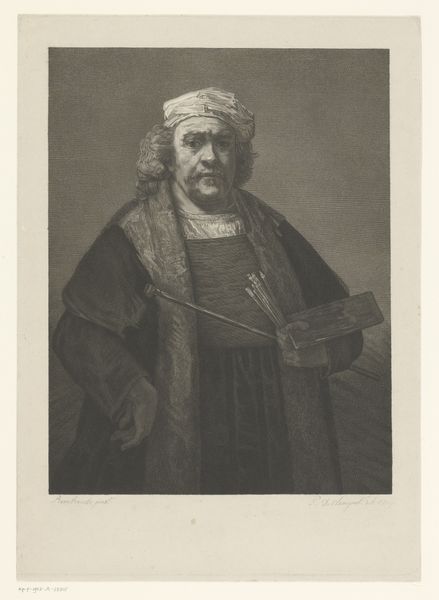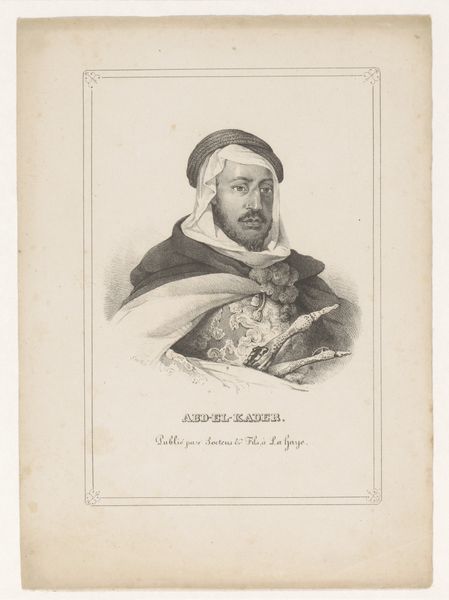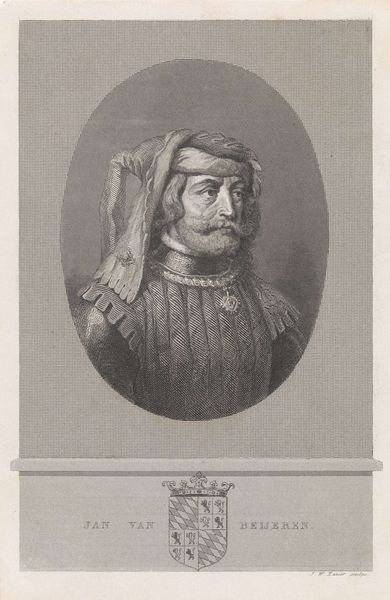
drawing, pencil
#
portrait
#
drawing
#
pencil sketch
#
pencil drawing
#
ancient-mediterranean
#
pencil
#
portrait drawing
#
islamic-art
#
history-painting
#
academic-art
#
realism
Dimensions: height 184 mm, width 126 mm
Copyright: Rijks Museum: Open Domain
Curator: This drawing, attributed to an anonymous artist and dated from 1830 to 1874, presents a portrait of Abd el-Kader, the bey of Mascara. It is executed in pencil. Editor: There's an air of both power and vulnerability about this image, wouldn't you say? It is captivating in its rendering of textures and shading. The gaze is steady, yet something in the set of the jaw suggests inner turmoil. Curator: Precisely. The choice of pencil emphasizes realism and brings us into immediate connection with the subject. His attire holds tremendous meaning; we note the headdress, cape and, prominently displayed, the array of ceremonial swords, all pointing to leadership, nobility and deep Islamic roots. The tassels denote elegance and refined status. Editor: Absolutely. Abd el-Kader was a pivotal figure during the French colonization of Algeria. Examining this portrait necessitates a reflection on orientalism, French imperialism, and the representation of Arab leaders within Western artistic frameworks. What purpose did these portraits serve in shaping perceptions and reinforcing power structures? Curator: Excellent question. It embodies history, memory, identity. Abd el-Kader emerged not only as a political but also a spiritual icon for many. His appearance itself became symbolic, charged with meanings layered by resistance, diplomacy, exile, and religious contemplation. Even the swords symbolize, in an archetypal way, preparedness. Editor: And what about the subtle shadows under his eyes? They perhaps indicate fatigue, or a burdened consciousness related to leadership under the shadow of conflict. These could also subtly align him within pre-established tropes within European depictions of the exotic "other." It's imperative that we analyze these depictions with careful historical context and critique. Curator: I agree completely, understanding context and symbolism unlocks a richer meaning from these historic portrayals. Ultimately, it reminds us that objects such as drawings serve as silent witnesses to history, waiting to disclose the multi-faceted truths they encapsulate. Editor: Precisely; examining this portrait provokes thought, it compels us to contemplate colonial power relations, individual agency, and the intricate relationship between art and identity. These conversations remind us of our collective duty toward conscientiously engaging with history through visuals.
Comments
No comments
Be the first to comment and join the conversation on the ultimate creative platform.
